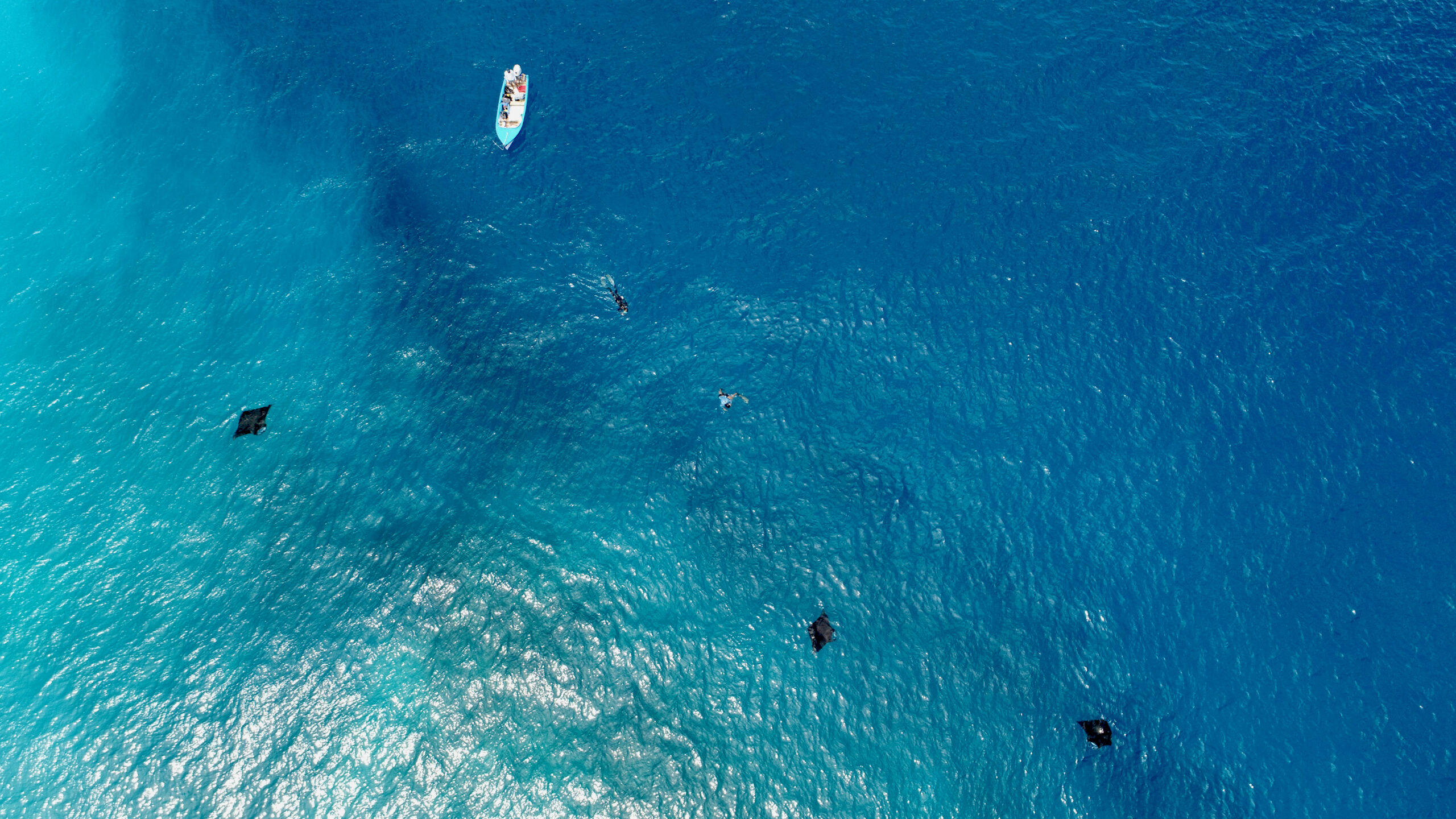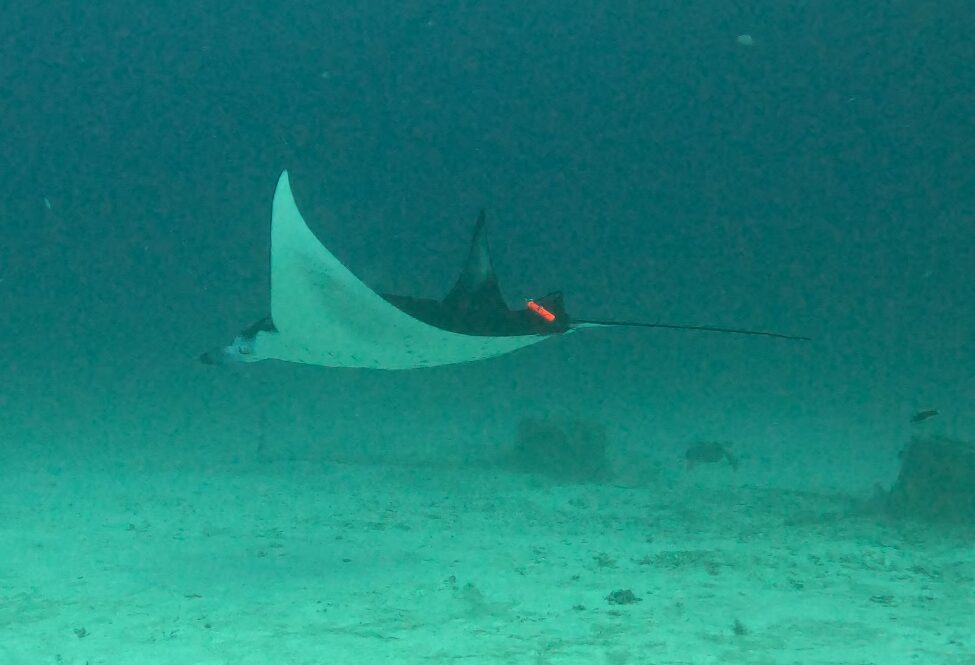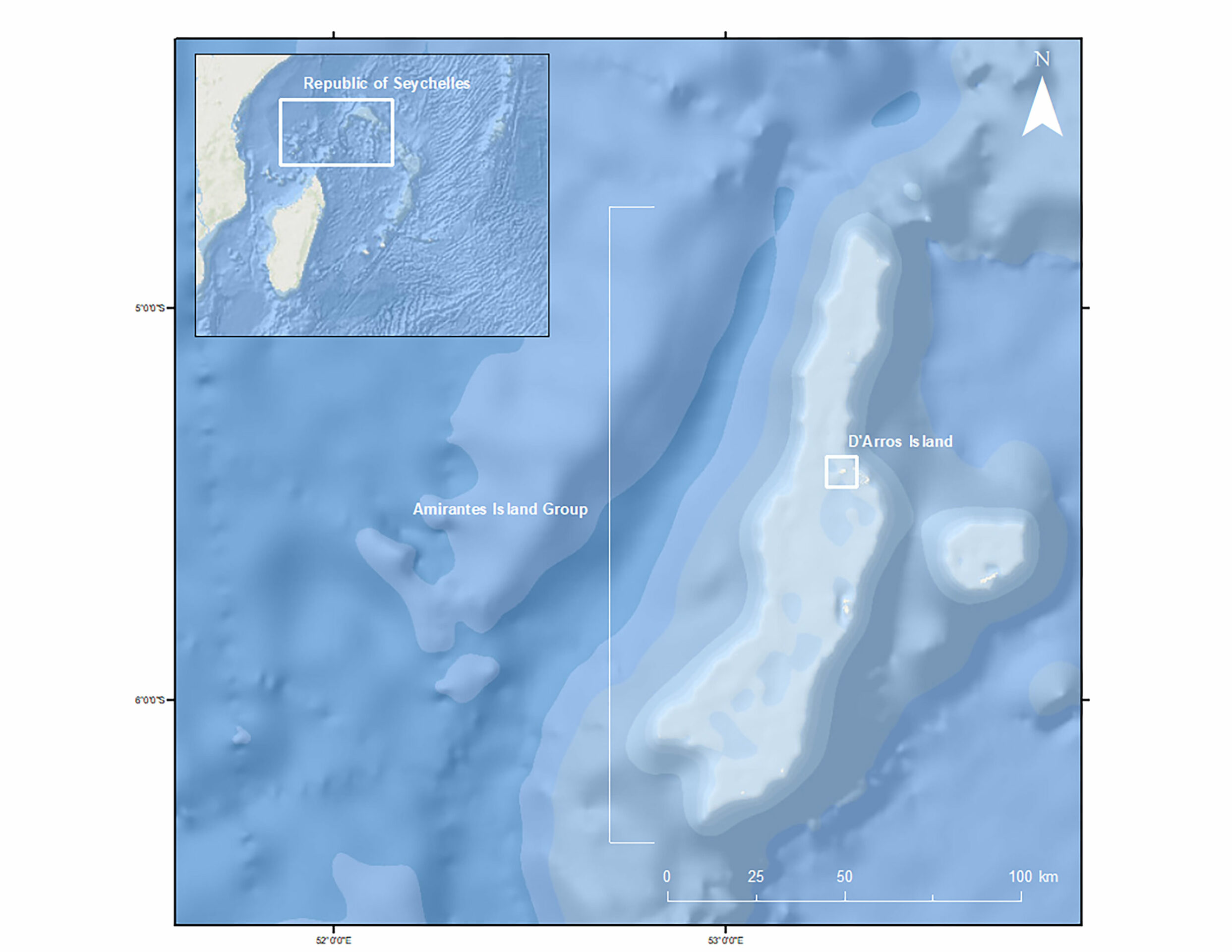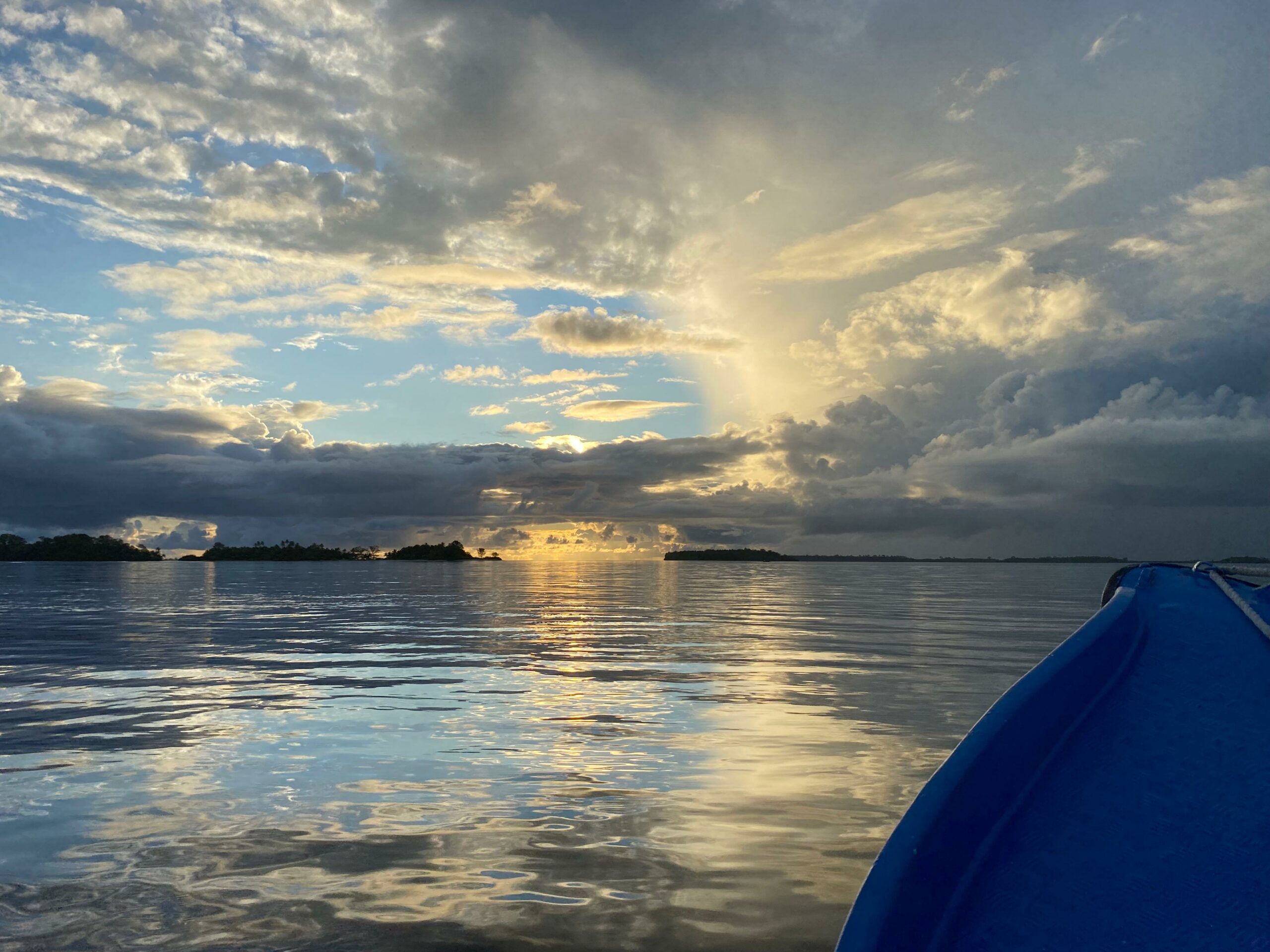Mobile mantas: staying close and going far
If you have been following my project journey over the last year, perhaps you know that we have been faced with a number of challenges relating to developing an attachment design that will secure motion-sensitive bio-logging tags (“FitBits”) onto reef manta rays for the first time. Our 2023 field season at D’Arros Island was faced with challenges owing to an attachment design that the manta rays were able to remove from their bodies (further proof of intelligence, if anyone ever tries to challenge that statement – how is that for problem solving!) followed by an early 2024 field season in March and April where we had uncharacteristically bad weather conditions and low manta sightings for that time of year. If you’ve read my last blog, you know that after 28 days of looking for manta rays and attempting to tag any that we did find, we finally got a 45-minute deployment on my last day! While a short dataset (we want 12+ hours for my PhD analyses), this finally offered us the proof of concept that we were aiming for.
Only a short six months later, I’ve found myself once again standing upon the beautiful white sandy shores of D’Arros Island, feeling the hot sun blasting down on me as my field team and myself get ready to load the boat with gear when it gets to the dock. Over the last few weeks of manta ray fieldwork we have had exceptionally good weather – water that was so calm it was like glass, visibility that was clear enough to see the bottom even in 20+ metres of water, and – importantly – plenty of manta rays. Some days we were even lucky enough to be swimming among ten different animals at one time!

Mantas from above. Photo © Henriette Grimmel | Save Our Seas Foundation
Within the first two days of fieldwork, we tagged two big female manta rays – Peduncle and Rea. These tags were scheduled to pop-off after 48 and 18 hours, respectively. The day after tagging, research director Robert Bullock and Project Leader Nico Fassbender (who I have been lucky enough to work alongside as we both tackle our PhD’s together) saw Peduncle swimming around at the cleaning station while changing over the remote cameras at the site. What a double win! Not only was the tag still on Peduncle, but she was still hanging around the area and appeared completely unbothered by her new stylish accessory.

‘Peduncle’ swimming along D’Arros reef after having visited the cleaning station the day after being tagged. Photo © Robert Bullock | Save Our Seas Foundation
These bio-logging tags are reusable archival tags, meaning they store all the data onboard the tag and I need to physically get the tag back to be able to download the data. As you can imagine, studying on a remote island such as D’Arros which is surrounded by kilometres upon kilometres of open ocean, and tagging highly mobile animals means that losing tags is a not-so-unlikely risk in this work. Over the course of this month-long fieldtrip we tagged a total of eight different manta rays, but only collected five datasets. Despite seeing Peduncle sporting her tag the day after tagging, we never retrieved that tag and were unable to get the data. Unfortunately, we lost both the tags from Peduncle and Rea before we started having successful retrievals and getting any data! Rob and I had ‘shift work’ of waking up during the night listening to see if the tags were up yet, and even went on an 5am adventure to retrieve one of the tags!
It was a relief once the successes started coming in. We successfully got three datasets before we lost our last tag. Now… you may be thinking “but you said you got five datasets, not three!”. The day after the tag was scheduled to pop off, beautiful calm weather meant that Rob and I took the research vessel Rainbow on a small adventure around the Amirantes. We found our tag bobbing around in 1000m of water, 36km south of D’Arros Island near neighbouring island ‘Poivre’. Talk about luck! A huge thank you should go out to program director Henriette Grimmel, who had the gut feeling that we needed to travel south looking for the tag and whose gut was right!

Map depicting D’Arros Island (small white box) and rough location of the tag retrieved near Poivre (black marker). Figure modified from Newsome et al. (2023).
Relieved, with a tag finally back in hand, we downloaded the data, recharged the tag and deployed it on yet another manta! I appear to have quite the successes on my last field days at D’Arros… the next day (my last day), we retrieved the tag at 11am, and then re-launched the boat at 13:15 (just after having lunch) and tagged another manta! Unfortunately, that tag was also not retrieved after that last deployment.
Even aside from the rollercoaster of deploying, losing, finding lost tags and then losing them again, we got some awesome data including resighting our tagged individuals. In addition to resighting Peduncle the day after tagging, we resighted another three mantas that were tagged this trip and one that was tagged earlier this year. This offered us the incredible opportunity to look at animal response to tagging. Not only do individuals return to normal behaviour quickly (we got to swim with two of the animals straight after tagging and Peduncle was cleaning the next day), but they also stay around D’Arros Island both in the short- (1-7 days) and long-term (> 4 months) following a tag deployment. This is encouraging – it suggests that these tags are minimally invasive, having little impact on the tagged individuals.
It is such a relief, after the ups and downs of the last year and a bit of fieldwork, to be leaving with five good datasets on the fine-scale activity regimes and behaviour of reef manta rays. Despite continuing to face the challenges associated with a fieldwork-intensive project, I am so grateful to be coming home with some wins!

Photo © Rachel Newsome | Save Our Seas Foundation
